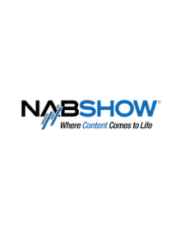Evergent is transforming the market by providing cloud-based subscriber and partner management solutions for digital service providers. Today, the company supports more than a quarter of a billion accounts globally spread across 180 countries, and work with five of the top 10 carriers worldwide. Evergent is growing fast and achieving success, much to the credit of the innovative product team as well as stellar partners and customers that strive for excellence.
That said - Evergent sometimes gets confused for being a new player in the market, but Evergent’s roots go deep. Although I’ve heard pieces of this before, it’s time to sit down with Vijay Sajja Evergent’s Founder and CEO to hear the story brought to life.
Steve Jobs is famously quoted saying (in relation to Pixar): ‘If you really look closely, most overnight successes took a long time.’ Does that quote hold true for Evergent?
“Ha, ha, yes thank you for the comparison, although Jobs wasn’t the only one to have said a version of those words. But you’re right, some of it holds true for us – prior to founding Evergent, I founded and led Infotech Solutions, a technology services company that integrated subscriber billing and customer care solutions for leading PayTV and Telecom companies including TCI, Echostar, AT&T, TCI, Level 3 and Qwest. So Evergent isn’t an overnight miracle. Years of diligent work and focus brought us here.”
What was your original vision for Evergent?
“My first customer for my previous company was TCI. TCI was the largest cable company at that time. Over time we worked with most of the large Cable, Satellite TV, and Telecom companies. They all loved to hate their back office. They were looking for a way to slice and dice their offers by price, by different markets in a future where consumers would have access to thousands of digital channels. But the back office systems weren’t ready to deliver that. Many of them tried to build those systems and failed. Evergent set out to tackle this problem that large telecom and cable companies could not solve on their own. We saw some of these failures up close and learned a great deal from those failures. That knowledge allowed us to create an end-to-end flexible platform that would allow these companies to iterate on their product offerings rapidly to react to changing market conditions.
It sounds like you were trying to build the perfect machine- one that doesn’t age, but that constantly evolves with the customer? At the same time, the ecosystem that surrounds digital services such as OTT services today didn’t exist. How did you start?
“Well, we needed to find a niche market to cross the chasm, that was OTT for us. We started pursuing OTT opportunities from its early days. In fact, we were one of the early companies in OTT. We sponsored conferences and began working with leading video platform players such as Ericsson, Quickplay, and Brightcove.
We created an end-to-end cloud-based user management system for any type of digital service provider. Among other things, the Cloud aspect was an advantage. Even today Cloud isn’t ubiquitous. While originally built for large carriers, our platform was well-positioned with flexible back-office functionality. We kept carrier-class security, scale, and uptime in mind.
As I set about fulfilling that original vision I wanted to do things a little bit differently. As an example – I’m an engineer and as is almost everyone else in Evergent. So we stay focused on the product. And there are a number of ways in which we’ve been able to create a product that allows our customers the flexibility to change on a dime. As an example, we’ve built an extremely rich feature set. That way customer enhancements end up being configurations rather than customizations. Another example is the 400+ APIs that we have which means that we can help customers evolve their offerings with tremendous speed.”
“That makes sense, but how could you possibly know or anticipate what consumers want consistently year after year?”
“I need to answer that in two ways – my point is that by creating a highly flexible product, we don’t need to know the future because the product is agile enough to flex. But the second part of this answer that we’ve always collaborated very closely with our customers. Sometimes new features come in as official requirements, but other times a water cooler conversation could spark an idea. The difference at Evergent is that we act on those ideas and build them into our core product. That reminds me of a different Steve Jobs quote: ‘Innovation distinguishes between a leader and a follower.’ – I think having a highly innovative and creative team is what has kept us at the forefront. That doesn’t mean we’ve been without challenges, as an example – in the early days, although our offering was well received, many potential customers saw the migration to new systems as a huge risk. That was a setback for us to learn from.”
Okay, so here we are 10 years later. What keeps the Evergent team going?
“As important as the technical aspects are the team and culture. Without our excellent team here at Evergent, we wouldn’t be where we are today. I really believe in promoting winning company culture. As an example, most team members have lunch together every day, and in our key locations, we have health and wellness programs like cross-fit training or meditation. And in turn, we’re rewarded with unusually high retention rates and a highly dedicated team.”
I have worked a dozen or more product development teams from far and wide, so if you don’t mind me saying this Vijay, Evergent has an effortlessly agile environment with an unusually high amount of innovation?
“Effortlessly agile -ha, ha, that’s an expression you don’t come across often. We’ve actually had clients come to study our teams in order to replicate our setup. If you read up on agile product management, you’ll find that many of our methods align very closely, but we started this many years before agile product development was a term, so the terminology that we use is our own. However, the environment of innovation and collaboration is there in a way that has uniquely positioned us to develop the product to be… what did you call it earlier ‘A timeless machine- one that doesn’t age, but that constantly evolves with the customer’.”
Lastly, what do see in the year ahead?
As we look ahead for 2018 and beyond, it’s clear that this space is fundamentally changing as companies look to deliver video in new ways. Many young consumers today — meaning millennials and younger – don’t know what a linear TV is. They want to consume content on the spot on a broad range of devices and even on social media platforms. Many of these trends are irreversible.
That constant shift in consumer expectations and needs will continue driving this industry forwards. And that’s the exciting part – staying in touch with the trends and staying at the forefront of this evolution.
Nancy Tomkins, Words by Design




